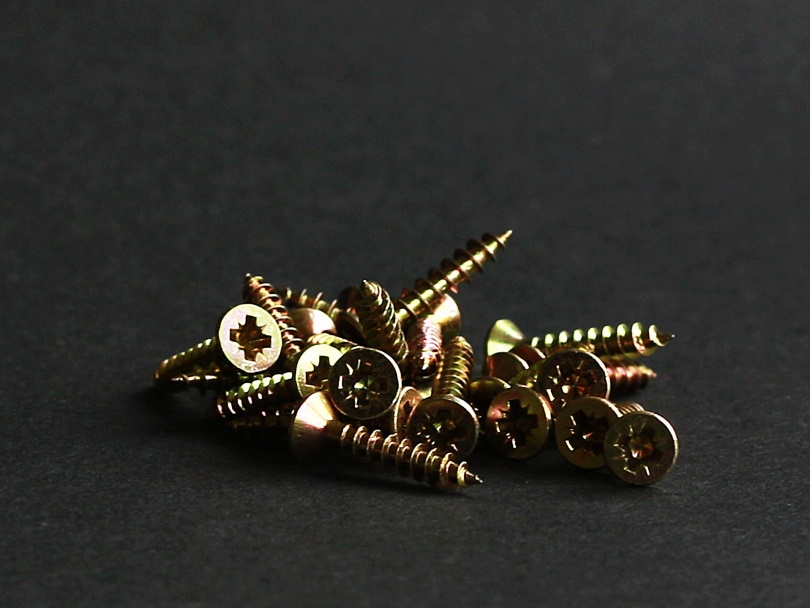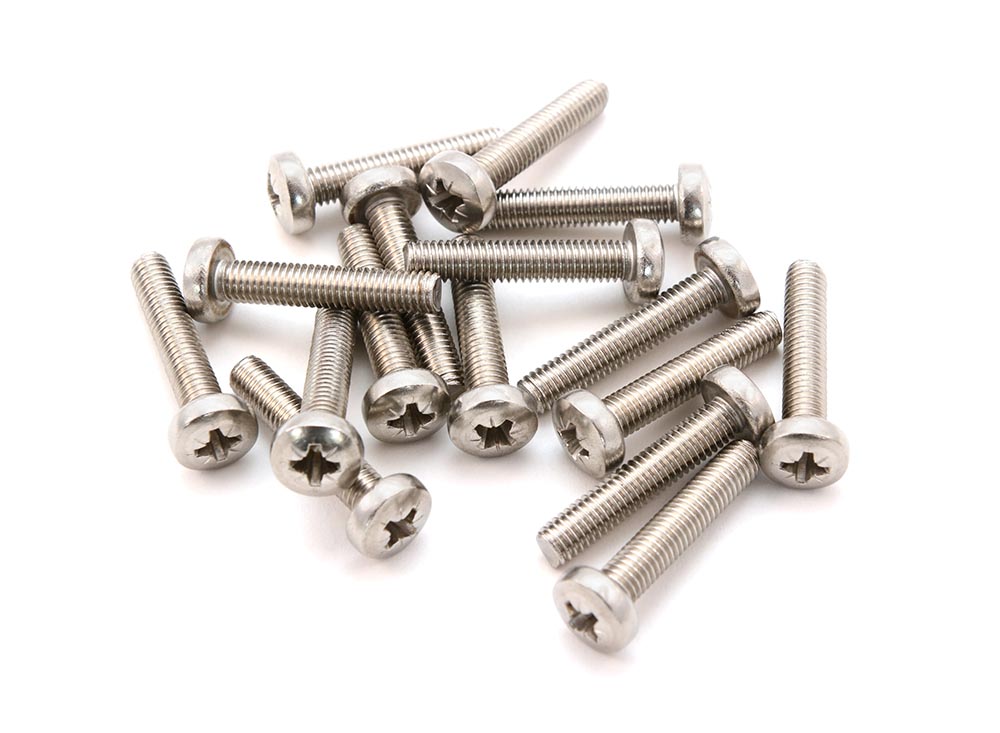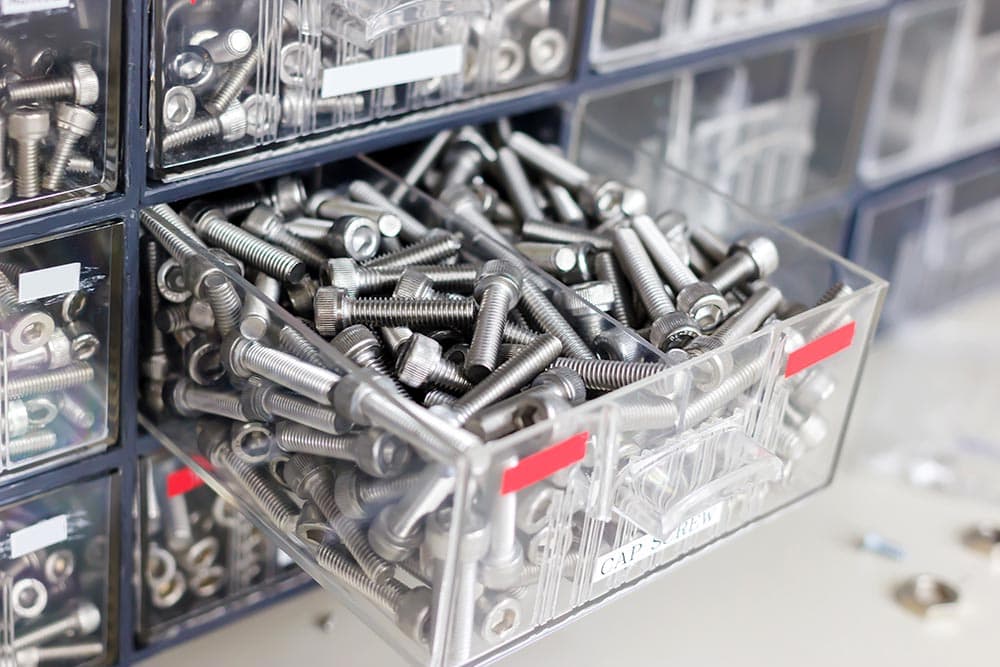Wood Screw vs. Machine Screw: Types, Differences, & FAQ
-

- Last updated:

Finding the right type of screw is vital so you don’t risk ruining the material you are handling. While screws come in various shapes and sizes and serve different purposes, they mostly fall under two broad categories: wood or metal (machine) screws.
Screws vary from bolts in that they pull two pieces of material together, leaving only the head visible. On the other hand, bolts are fasteners with nuts attached, penetrating through materials.

Overview of Wood Screws

Wood screws are common in woodworking projects. While wood glue is stronger and does not leave visible markings, it takes a while to dry. Wood screws come in different shapes and sizes to suit your specific needs and can be made of stainless steel, brass, or steel.
Premium or multi-purpose wood screws are mostly preferred for their versatility, while flat-headed screws are great for countersinking. Pocket screws are handy when making cabinets or assembling a bed frame.
- Phillips head (resembles a cross)
- Star head (have six points)
- Square head (not as robust as star heads)
- Flathead screw (single slit on the head)
 Overview of Machine Screws
Overview of Machine Screws

Machine or metal screws are usually small, sharp-pointed, and have pan heads. This design is to help them pierce through sheets of metal. Metal screws are generally smaller than other screws and are designed for installation in a tapped hole and have a corresponding nut. Machine screws (or bolts) are versatile; you can substitute them for wood screws if necessary.
Machine screws are also referred to as flat tip screws and are not used for woodworking but rather for fastening metal. Apart from flat-headed screws, other varieties in the market include Torx head, Fillister, and pan head machine screws. If you are shopping for drill bits, you’ll come across three common varieties:
- Six-pointed
- Spanner
- Trident
Differences Between Wood and Machine Screws
There are many similarities between wood and metal fasteners. All screws comprise of four key components:
- The tip
- Shank
- Threads
- The head
When it comes to length, wood and machine screws range from ¼ inch to 3 inches. In addition, the materials used to make these screws are similar, and you can drive both screws using similar devices.
The above similarities notwithstanding, there are significant differences between these fasteners in function and utility.
Strength
Machine screws are more robust than their wooden counterparts because they are designed to join metal parts like industrial equipment and engines. Wood screws, in contrast, are designed to hold together items made of wood and therefore don’t have to be too robust.

Application
By and large, wood screws are driven into wooden objects, while machine/ metal screws are driven into metallic objects. As a result, machine screws are commonly used in engineering, manufacturing, and almost all industries, while wood screws are suitable for jobs involving lumber and plywood.
Threading
Metal screws have threads covering the whole shaft and have more threads per inch, while wood screws lack this detail. Their threading is tighter and sharper, covering the entire shank to make the grip tighter and secure the connecting items. Wood screws, on the other hand, have a more comprehensive thread (or more spaced), and some longer ones lack lines at the top part.
The partial threading of wood screws helps them to have a better grip. More so, partial or spaced-out threading prevents the fastener from drilling too far as this would crack the wood. Should this happen, the crack would damage your material, and the screws wouldn’t hold.

Self-Tapping
Metal screws are ideal for self-tapping jobs, such as securing a sheet metal to a metallic base or fiberglass. These kinds have a sharper tip for connecting metal or other cumbersome loads where there is a pilot hole. Other machine screws are self-drilling with a drill-point tip. These fasteners can cut through rigid material where there is no pilot hole.
Wood screws are not ideal for jobs where self-tapping is required. Tapping into a wooden material can weaken the area and interfere with the grip when two materials are joined.
Some people use self-drilling and self-tapping interchangeably, but these fasteners have apparent differences. Self-drilling screws have a thread running the entire shaft through the tip. They can drill themselves into the material in use but need a pilot hole prepared first. These screws are ideal when working with soft metals or materials that already have pilot holes.
Self-tapping screws have vertical cutting blades at the endpoint, which drill a pilot hole instead of a drill bit. They tap an excavation of the suitable diameter to facilitate thread insertion. These screws are ideal for drilling into a rock or brick surface but not softer materials as they can compromise the holding strength.
Type of Material
Wood screws are great when connecting softer materials like plywood or other types of wood. However, if you are working with more rigid materials, you must drill a pilot hole first to accommodate the non-threaded part of the wood screw. Metal or machine screws have enough tensile strength for linking more rigid materials.
Both screws are made of stainless steel, brass, aluminum, bronze, etc. Brass and bronze fasteners are typically used in jobs where they match brass or bronze surfaces to boost their aesthetic appeal. In addition, stainless steel and aluminum screws are ideal for connecting surfaces exposed to moisture.

Conclusion
Wood and machine screws vary in many ways. The most remarkable difference is that wood screws have rougher threads while machine screws have more delicate lines through the shank. Therefore, wood screws should be used in woodworking projects, while machine screws are best for fastening metal. In the end, both fasteners deliver their best performance when used for the proper purpose and material.
Featured Image Credit: (L) Pixabay | (R) Piqsels
Contents
 Overview of Machine Screws
Overview of Machine Screws